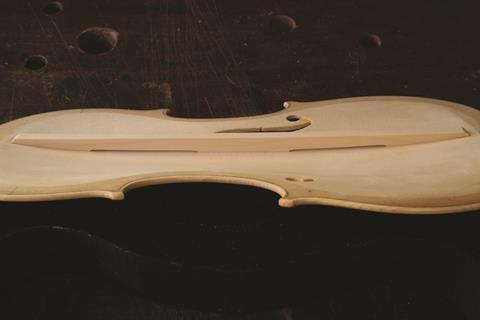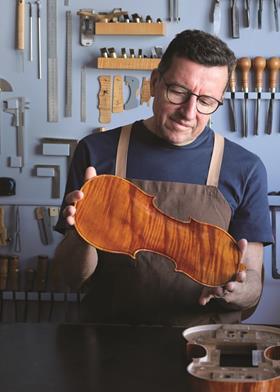The French luthier shares his design for a new type of bass bar which is both a strong support and allows the top plate to vibrate more freely

This is an extract from a longer article in The Strad’s February 2018 issue. To read in full, download now on desktop computer or via the The Strad App, or buy the print edition
Despite the fact that I’d been making violins for more than 40 years, I still felt that I had not yet completely understood the key functions of the bass-bar. Everyone learns while starting out that it is there to support the arching, to give a ‘spring’ to the top, and to add mass under one of the bridge feet. In the end, though, I realised that its role must be more simple: to be a strong, static support for the part of the top plate between the f-holes. For this reason I decided to put the received wisdom to one side and instead make a very basic bass-bar, a strong support that did not restrict the vibrations in the top plate. In my opinion the simplest systems are the easiest to perfect.

Over three years, with the help of my former assistant Vincent Schryve, I made around 30 bass-bars. I tried modifying the height, length, width and springiness of the bass-bar, testing it in violins, violas and cellos, and by the end I was satisfied that my final model had improved the sound, power, projection, clarity and responsiveness of every instrument. I used no sophisticated acoustic apparatus for my experiments, but when it came to fitting instruments with my new bass-bars and testing their sound quality, I was lucky enough to have some fantastic soloists to play them. To my mind, the very best sound-testing tools are the players themselves.
To see the full article and photos, download The Strad’s February 2018 issue on desktop computer or via the The Strad App, or buy the print edition



































No comments yet